Order online
| Home | About the author | Other books | Picture gallery | Contact | Order online |

Order online
Picture gallery
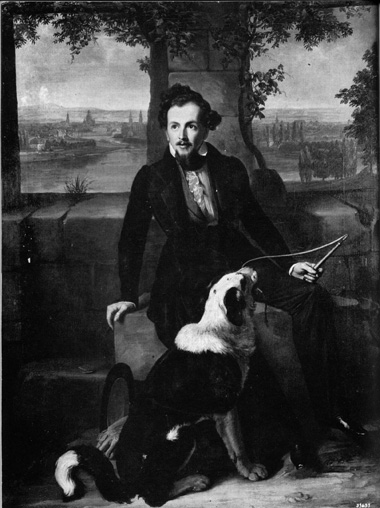
Sam's four years in Europe were almost at an end when he sat for this elegant portrait by court painter Carl Christian Vogel von Vogelstein in Dresden in 1836. With him is one of the expensive acquisitions that his father lamented, a Newfoundland dog named Rover. (Courtesy Mrs. William Mailliard. Photograph from the Frick Art Reference Library, New York.)
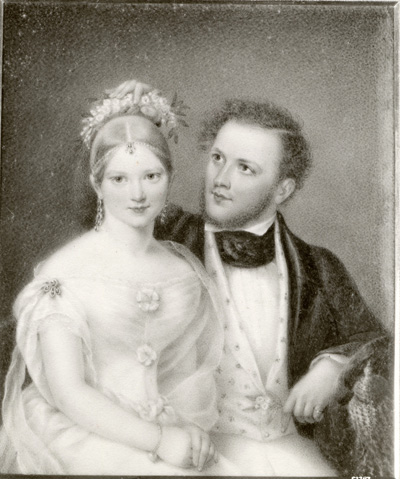
Sam had hoped that Emily would wear orange blossoms in her hair at their wedding on January 25, 1838, but she chose instead a diamond parure, a gift from her grandfather, John Jacob Astor, the richest man in America. When Ann Hall, a relative by marriage, painted their bridal portrait, Sam got his wish: Emily wears the jewelry but he holds the flowers over her head. Courtesy J. Winthrop Aldrich, Astor family archives, Rokeby, Barrytown-on-Hudson, New York.)
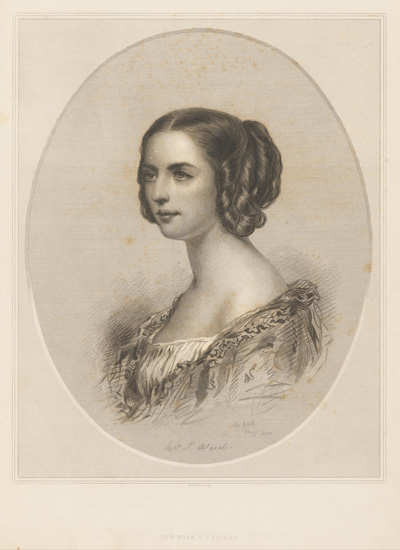
Sam married Medora Grymes of New Orleans on September 20, 1843. Described by one artist as "the incarnation of Aphrodite," she was chosen by author Caroline Kirkland as one of the most beautiful women in America to illustrate The Book of Home Beauty in 1852. (Caroline Kirkland, The Book of Home Beauty [New York: Putnam, 1852].)
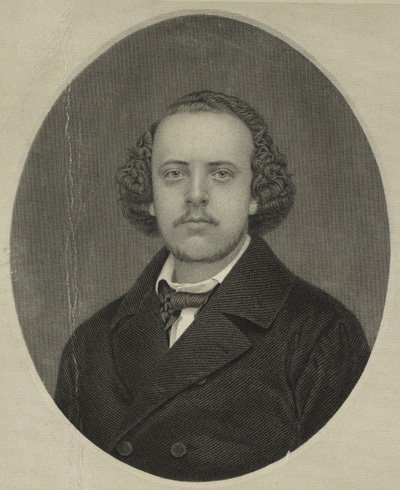
After his reckless speculation caused the smash-up of Prime, Ward, and King in 1847, Sam headed West to the California gold fields with the '49ers. Pictured circa 1851, Sam had briefly abandoned his carefully-clipped Van Dyke beard for a more rugged look. (Courtesy New York Public Library, New York.)
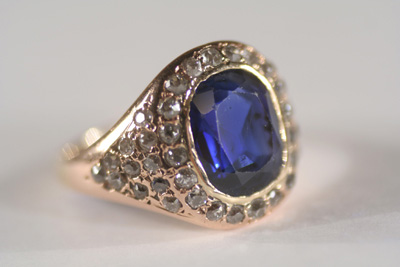
Sam acquired his five-carat, deep blue sapphire ring, with its 42 small sparkling diamonds, somewhere on his travels in South America. Before he departed for one of his long trips abroad, he would leave it with Mrs. Barlow for safekeeping. Sam's ring has been passed down through the generations of Louisa's family. (Courtesy Julia Terry.)
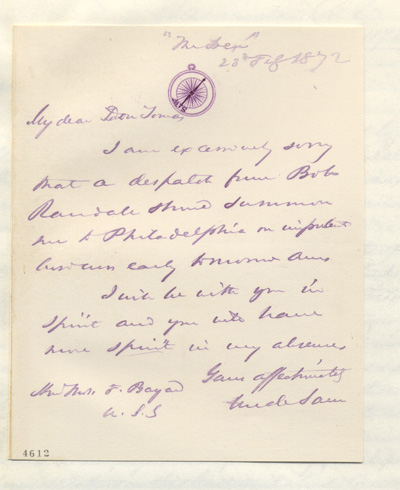
Flush with handsome retainers in the late 1860s, Sam designed his own distinctive stationery. The compass rose might be red, gold, purple, or green, but the needle always pointed to SW. In February 1872, Sam signed off on this jaunty note to "My Dear Don Tomas" (Delaware senator Thomas Bayard) with his customary "Yours affectionately, Uncle Sam." (Courtesy Library of Congress, Manuscripts Division.)
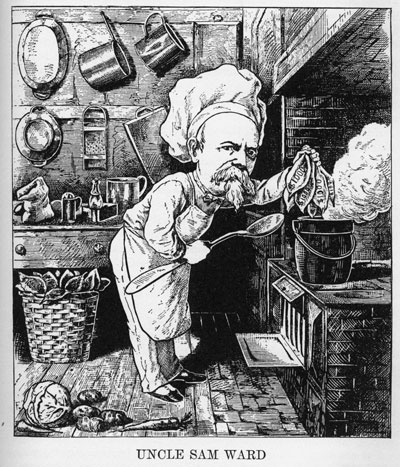
After lecturing the House Ways and Means Committee on the hazards of lobbying and the importance of dining well, Sam told a parable about a clever cook, the King of Spain, and a meal with one unusual ingredient. In this cartoon from the New York Daily Graphic, Sam cooks up a pot of $1,000 pigs' ears himself. (New York Daily Graphic, December 20, 1876.)
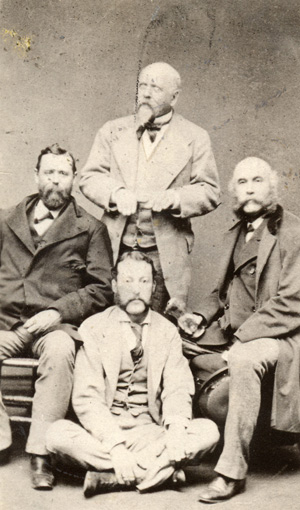
Sam, perhaps in his capacity as president of the exclusive (three-member) Mendacious Club, offers a mock benediction to the youngest member, Archibald Philip Primrose, the Earl of Rosebery. While spidery writing on the back of the image identifies the gentleman on the left as the club's only other member, William Henry Hurlbert, it looks little like him. Lord Houghton, the poet Monckton Milnes, looks on. (Courtesy J. Winthrop Aldrich, Astor family archives, Rokeby, Barrytown-on-Hudson, New York.)
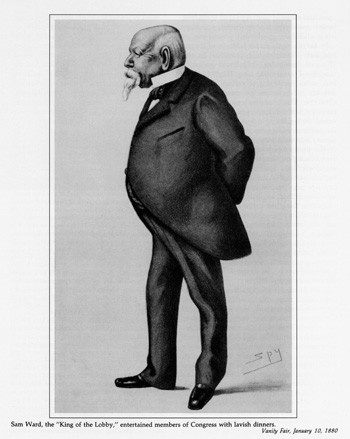
After his visit to England in 1880, the London Vanity Fair ran a glowing article about Sam, complete with a caricature by "Spy," the nom de crayon of Sir Leslie Ward (no relation). Dubbed "the Prince of good livers," Sam was portrayed as a man who "...often controlled legislation and decided the fate of important measures." (Vanity Fair, January 10, 1880.)
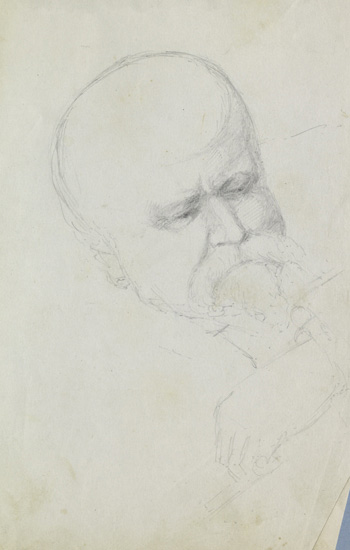
The identity of the artist who sketched an older, pensive Sam, circa 1882, is unknown. The drawing is among the contents of eight thin boxes of Sam's papers at the New York Public Library, all that are left of the "several large chests" of his documents described in 1903, before Julia burned them. (Courtesy New York Public Library.)
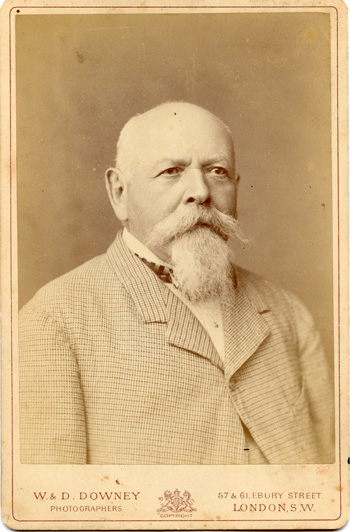
One of the last photographs of Sam, this one was taken in London, where he had fled to escape creditors, in 1883. "Not a word about my whereabouts," Sam had warned Julia upon departing the United States, but when he became the lion of the social season, seen everywhere with the British elite, the secret was out. (Courtesy J. Winthrop Aldrich, Astor family archives, Rokeby, Barrytown-on-Hudson, New York.)